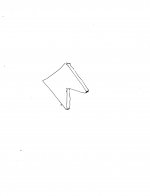Acrobat
Member
- Joined
- Jun 30, 2008
- Messages
- 471
Hi, I need to route an inset groove about half inch in from all side on a shape that’s not straight edged as a rectangle, but closer to oval egg shaped. Is there a router bit/guide setup that does this? I’ve seen plenty of videos but they all show straight edges guides and that will not work for me here. I’m thinking of something with a bearing and arm to follow the shape but having the router bit about 12mm or half inch inside the edge. I’ve tried the of1010 Festool arm with bearing attachment, but it will not let me extend it to half inch and I think it’s not designed for what I need, unless I’m not understanding how it works.
I don’t want to have the extra time and hassle of making a template to follow so figured someone must have the solution, after all Festool a motto is faster easier better isn’t it?
Any ideas appreciated.
I don’t want to have the extra time and hassle of making a template to follow so figured someone must have the solution, after all Festool a motto is faster easier better isn’t it?
Any ideas appreciated.



